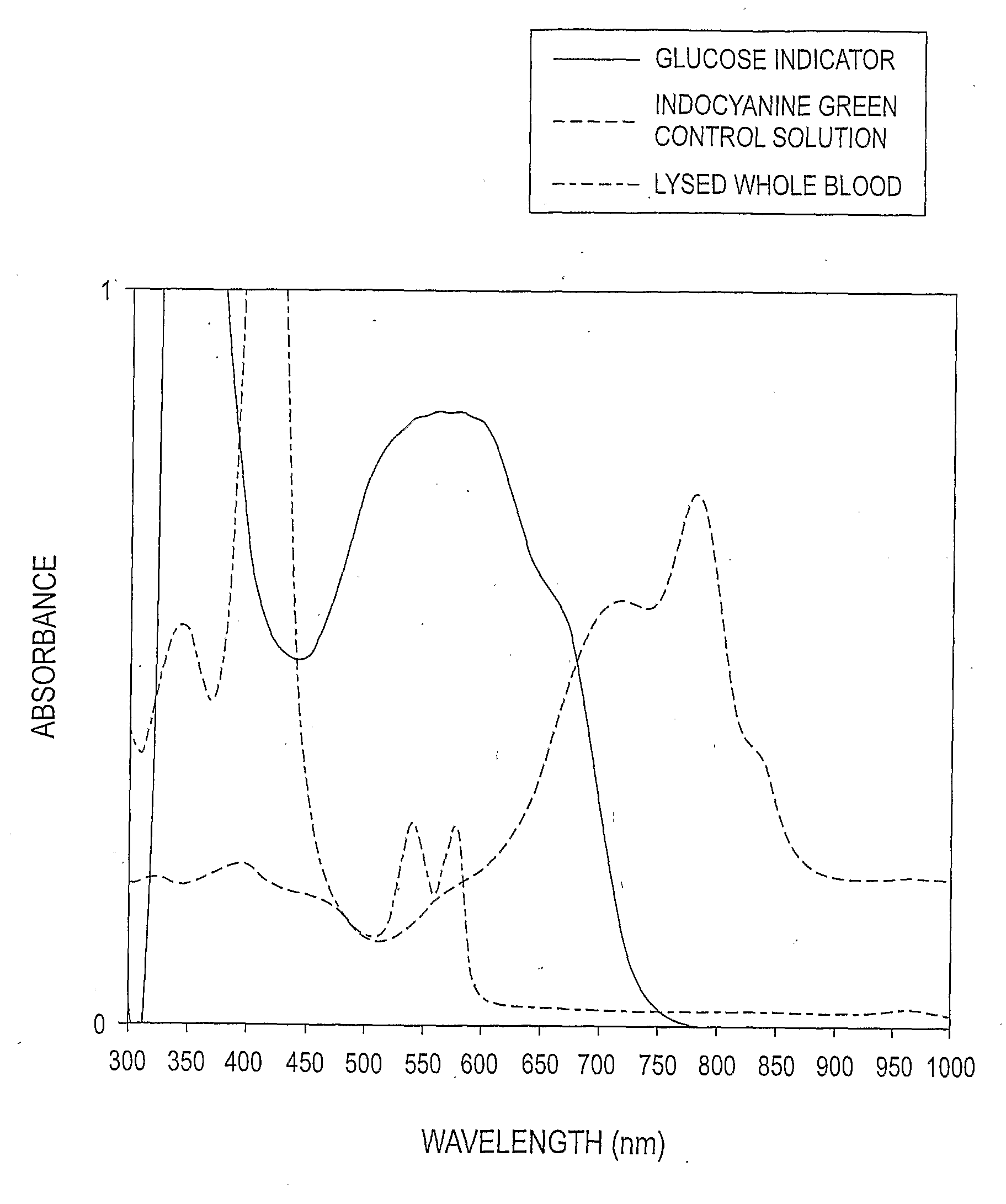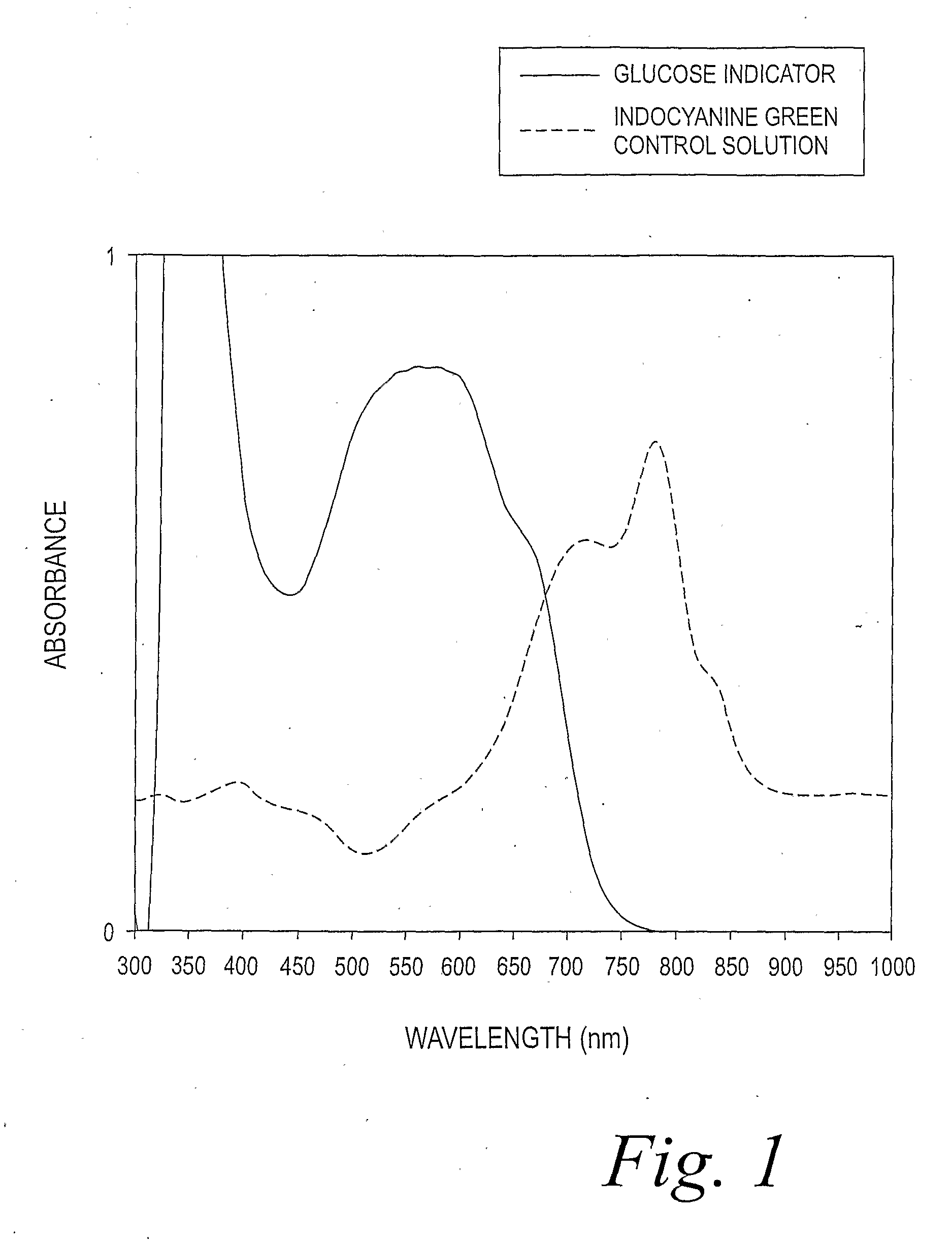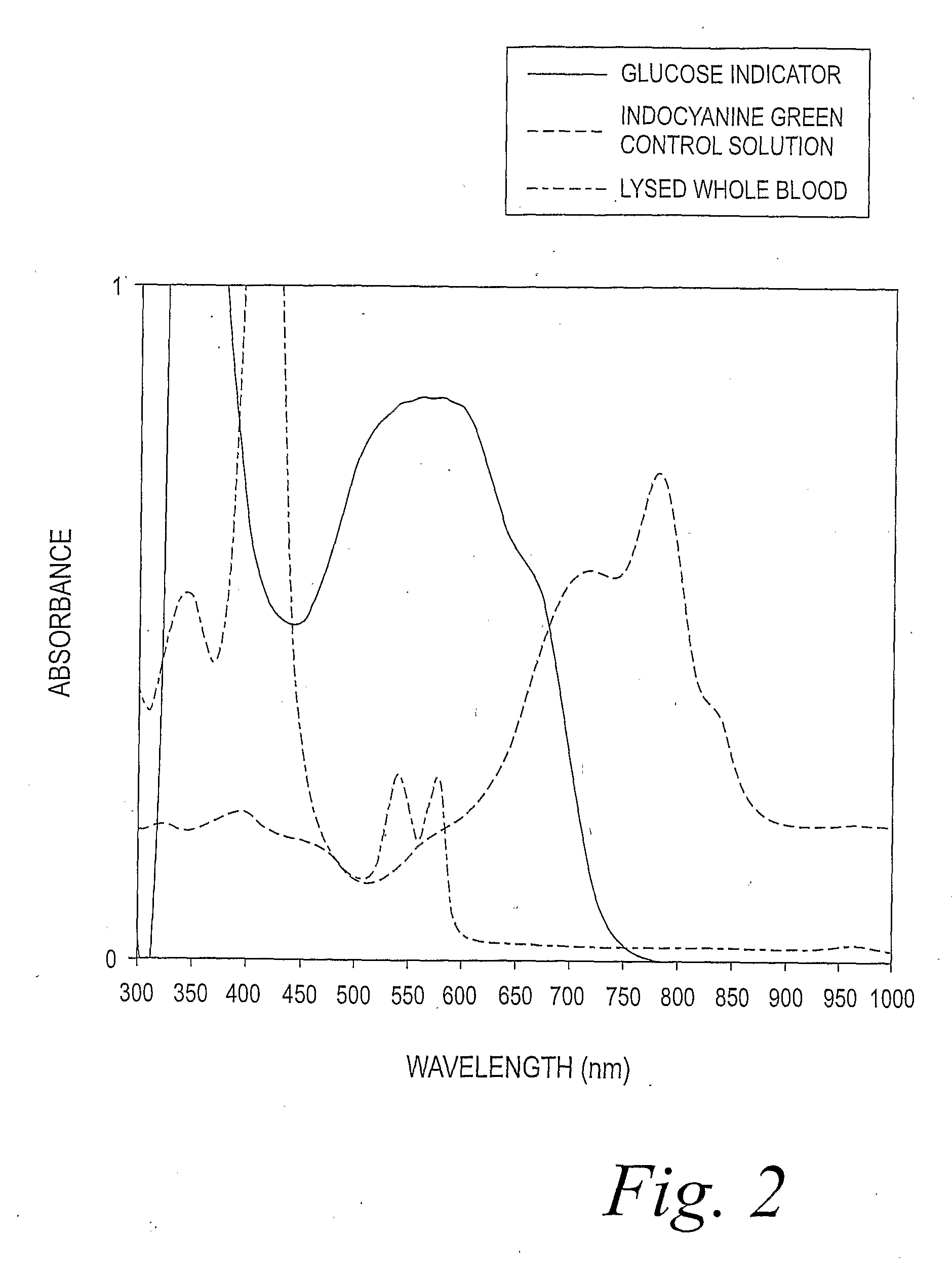Method of Differentiating Between Blood and Control Solutions Containing a Common Analyte
- Summary
- Abstract
- Description
- Claims
- Application Information
AI Technical Summary
Benefits of technology
Problems solved by technology
Method used
Image
Examples
example 1
[0026]The dye indocyanine green (Sigma Aldrich) was dissolved in a phosphate-buffered saline solution. The absorbance spectra of this solution was measured with a Hewlett-Packard Model 8453 diode-array UV-visible spectrophotometer and the results were plotted in FIG. 1. As shown in FIG. 1, the maximum absorbance was found to be at about 780 nm.
[0027]A commercially available tetrazolium salt, WST-4 (Dojindo) was dissolved in 100 millimolar potassium phosphate buffer having a pH of about 7.5. The WST-4 was reduced to the equivalent formazan dye by addition of ascorbic acid, thus simulating the production of a colored indicator in glucose tests. The solution was measured and the results were plotted in FIG. 1 for comparison with the absorbance spectra of the dye indocyanine green. The peak of the absorbance of the formazan was about 550-600 nm, clearly being distinguished from the absorbance of the dye.
example 2
[0028]Whole blood was lysed with a hypotonic solution of water and then diluted in phosphate buffered saline. The absorbance of the lysed blood was measured as in Example 1 and the results plotted in FIG. 2 along with the two absorbance plots of FIG. 1. The maximum absorbance of the lysed blood was about 400 nm, a wavelength clearly distinguished from those of the formazan and indocyanine green. It can be concluded that if blood is lysed as part of a glucose test, that it will not interfere with the labeling dye that indicates the presence of a control solution.
embodiment a
Alternative Embodiment A
[0029]A control solution for testing the performance of an optical instrument adapted to measure the concentration of glucose in blood in proportion to the optical response of an indicator, the solution comprising a labeling substance recognized by the optical instrument as identifying the presence of the control solution.
PUM
| Property | Measurement | Unit |
|---|---|---|
| Concentration | aaaaa | aaaaa |
| Absorbance | aaaaa | aaaaa |
| Wavelength | aaaaa | aaaaa |
Abstract
Description
Claims
Application Information
 Login to View More
Login to View More - R&D
- Intellectual Property
- Life Sciences
- Materials
- Tech Scout
- Unparalleled Data Quality
- Higher Quality Content
- 60% Fewer Hallucinations
Browse by: Latest US Patents, China's latest patents, Technical Efficacy Thesaurus, Application Domain, Technology Topic, Popular Technical Reports.
© 2025 PatSnap. All rights reserved.Legal|Privacy policy|Modern Slavery Act Transparency Statement|Sitemap|About US| Contact US: help@patsnap.com



